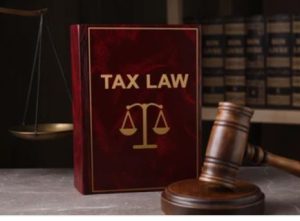INTRODUCTION
Initially introduced in India through a Direct Tax Code Bill in 2009, General Anti-Avoidance Rules (GAAR) are covered under the umbrella of the Income Tax Act, 1961 and have been effective in the nation since 1 April, 2017. Much like any other nation, India too was plagued with multiple instances of tax avoidance wherein companies were resorting to aggressive measures in order to avoid pay taxes which were due to the government. In the recent years, this practice has become a subject of major concern as more and more nations are incorporating the doctrine of GAAR within their respective tax legislations. Therefore, India not being an exception to these issues, soon realized that it may not always be possible for the tax authorities and the courts to address the various varied cases of tax evasion with the assistance of the pre-existing tax laws and hence adopted these rules in order to catch hold of all those complicated tax arrangements, which may seem legally valid, but are designed with the sole purpose of avoiding taxes.

PROCEDURE FOR THE APPLCATION OF THESES RULES:
In order to make sure that these provisions are being misused, a two-step approval process is followed:
1. If the activities of the tax payer are such that the tax official feels the need to invoke the provisions of GAAR then the official must first refer the case to Principal Commissioner.
2. Once after going through the case, if the Principal Commissioner or Commissioner feels that the provisions of GAAR must be invoked then he/she issues notice to the said tax payer so that they can submit their objections beforehand and thus giving them an opportunity to be heard.
3. The Principal Commissioner may go ahead and issue appropriate orders for declaring the tax arrangement practiced by the tax payer to be an impermissible avoidance in case they fail to submit their objections (within prescribed time limit) post the receipt of the aforementioned notice.
4. If the taxpayer opposes the aforementioned declaration made by the Principal Commissioner and the argument made in support of this opposition is not satisfactory enough for the Commissioner then he/she may refer the case to the Approving Panel in order to make a declaration as they may deem fit. On the other hand if the Principal Commissioner or the Commissioner is satisfied with the justifications presented by the tax payer then the GAAR provisions are not invoked and such information is further conveyed to the tax official, in writing.
5. Once the case reaches the Approving Panel, the Panel shall give the tax payer an opportunity to be heard (depending on the case) as it cannot issue any order or notice prejudicial to the interests of the tax payer before doing so and after listening to their side of the story if the Panel is still not convinced then it is free to declare the arrangement as an impermissible avoidance arrangement.
6. After such intense scrutinizing procedure, the directions are finally issued by the Approving Panel are binding not only on the tax payer but also on the Principal Commissioner and the tax authorities.
7. Further, it must be noted that the tax officials are not authorized to issue any assessment or reassessment orders under the provisions of GAAR, without receiving an approval from the Principal Commissioner or the Commissioner.
EXCEPTIONS
Listed below are certain arrangements where these rules would not be applicable:
1. where the tax benefit accruing to all the participants to the arrangement, for the relevant tax year, does not exceed Rs. 30 million.
2. in the case of a Foreign Portfolio Investor who, with the prior permission of all the competent authorities, has made investments in listed or unlisted securities without claiming any benefit under any tax treaty.
3. to a non-resident, with regards to a direct or indirect investment in an FPI through offshore derivative instruments or otherwise
4. to any income accruing from any investment made before 1 April, 2017.
CONCLUSION
It has been quite some time since these rules were introduced for the very first time in India and since then a number of amendments have been made in the provisions of GAAR and throughout this process, the government has been very consultative in order to make these rules as self-sufficient as possible. The two-step approval procedure practised before the invocation of these rule, must also be appreciated as it acts as a safeguard against the misuse of these provisions and also shows the true intention of the legislature behind the implementation of these Rules. Moreover, since these regulations lay down a detailed guidelines as what qualifies to be an impermissible avoidance arrangement, it also affords an opportunity to the tax payers to evaluate their current tax arrangement and take appropriate corrective measures in order to avoid being hit by the provisions of GAAR.
Author: Sukanya Singh, BA Llb, 4th year, Kirit P. Mehta School of Law, NMIMS, in case of any queries please contact/write back to us via email to chhavi@khuranaandkhurana.com or at Khurana & Khurana, Advocates and IP Attorney.



